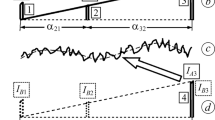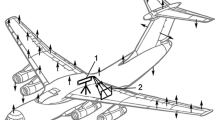Abstract
The variation in Mode I stress-intensity factor throughout the thickness of an ASTM standard compact tension specimen was determined using scattered-light speckle interferometry. Two very thin sheets of coincident coherent light traveling in opposite directions were passed through a Plexiglas specimen normal to the crack faces. A double-exposed photograph of the scattered-light speckle pattern was taken while the specimen was subjected to a small load increment. From this double-exposed photograph, the change in the crack-opening displacement could be determined. From the information about the crack-opening displacement in the region of the crack tip, the stress-intensity factor was calculated for various interior planes and on the surface of the specimen. For the compact tension specimen tested, the stress-intensity factor did not vary throughout the specimen's thickness. The method of scattered-light speckle interferometry proved to be very powerful in solving this complex three-dimensional problem.
Similar content being viewed by others
References
Sih, G.C., “Bending of a Cracked Plate with Arbitrary Stress Distribution Across the Thickness”J. of Engrg. for Industry,92 (2),350–356 (1970).
Hartranft, R.J. andSih, G.C., “An Approximate Three-Dimensional Theory of Plates with Application to Crack Problems,”Intnl. J. Engrg. Sci.,8 (8),711–729 (1970).
Westmann, R.A., University of California at Los Angeles, private communication.
Folias, E.S., “On the Three-Dimensional Theory of Cracked Plates,”J. of App. Mech. 42 (3),663–674 (1975).
“Standard Method of Test for Plane-Strain Fracture Toughness of Metallic Materials,” ASTM Standard E 399-74, Philadelphia, PA (1974).
Smith, C.W., “Use of Three-Dimensional Photoelasticity and Progress in Related Areas,”Experimental Techniques in Fracture Mechanics, A.S. Kobayashi, ed., Iowa State Univ. Press, Ames, IA, 2, 3–58 (1975).
Packman, P.F., “The Role of Interferometry in Fracture Studies,”Experimental Techniques in Fracture Mechanics, A.S. Kobayashi, ed., Iowa State Univ. Press, Ames, IA,2, 59–87, (1975).
Barker, D.B., andFourney, M.E., “Displacement Measurements in the Interior of 3-D Bodies Using Scattered-light Speckle Patterns,”Experimental Mechanics,16 (6),209–214 (1976).
Villarreal, G., Sih, B.C. andHartranft, R.J., “Photoelastic Investigation of a Thick Plate with a Transverse Crack,”J. App. Mech.,42, (1),9–14 (1975).
Author information
Authors and Affiliations
Additional information
Research funded by National Science Foundation Grant #GK-40012.
Rights and permissions
About this article
Cite this article
Barker, D.B., Fourney, M.E. Three-dimensional speckle interferometric investigation of the stress-intensity factor along a crack front. Experimental Mechanics 17, 241–247 (1977). https://doi.org/10.1007/BF02324837
Received:
Revised:
Issue Date:
DOI: https://doi.org/10.1007/BF02324837




